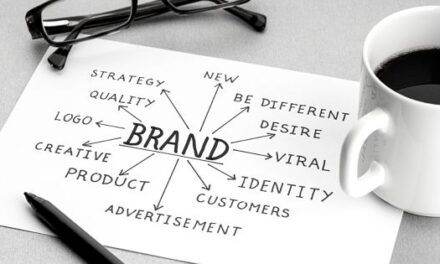What makes us choose specific products during a store visit? How do we remember brands and keep coming back to them? In the first place, the answer seems to be that it is determined by the price, the quality of the goods, as well as their wide availability and popularity. However, as it turns out, one of the significant factors that occur on the way to purchase is also the design and aesthetic qualities of the product. A huge role is played by our subconscious and the action of associations.

The visual wrapping of a brand is a very important marketing tool in the process of building brand identity among consumers. Since it has a representative and advertising function, among other things, the design should be well suited to the nature of the brand and take into account the preferences of the target group to which we are mainly directing the product.
Want to know how to use the branding phenomenon? Here are the three ways in which design influences your brand’s sales and general success.
Attention magnet
An intriguingly designed logo or packaging has a real impact on increasing product sales. Its colour scheme, the way it is displayed, or its shape is important for aesthetic impressions and the overall perception of the brand.
In a world of dynamically changing market trends, in order to stand out among the competition, a creative approach is necessary, including product aesthetics. Innovative, distinctive packaging arouses consumer interest and makes a product memorable for a long time.
In conclusion, by creating a visually attractive product, you can increase its value in the eyes of consumers.
Brand = human being?
An extremely interesting and apt comparison is the pairing of a brand with a person. In the Internet era, we are witnessing the birth, development, adolescence, and ageing of many companies. Just as it is important for us to make a first impression on a new met person, so in an analogous way, we need to present the brand to customers – from the best possible side. It is important to show its originality and distinctiveness, as every company (just like people), is different. We differ not only in appearance but also in character. When creating a brand, we want to “be liked”, create an authentic relationship with the customer, and cooperate with it during all stages of its life. To achieve this, we need to express the brand’s personality and values adequately. This is all in order to become our customers’ best friend: to create a pleasant association and a sense of trust through which consumers will be more willing to buy our products or services.
Branding, meaning the creation of awareness
The effect of branding is to create brand awareness among customers and, in this, to build a relationship with the customer and associations with the company that influence, among other things, their choices and purchase decisions. According to a recent study, 93% of shoppers are likely or very likely to buy from a business they feel connected to over a competitor. By investing in branding, we become a friend to our recipient, whom he will willingly trust and often return to. This is not an easy but extremely profitable process.
Short case study
At the end of the 19th century, branding specs (although, at the time, no one had any idea that this was what it would once be called) – managed to convince Americans that Coca-Cola was not only synonymous with the best taste but also with freedom. The brand of the brown bubbly drink, the distinctive logo, and the packaging were a promise to customers – you get something special, something extraordinary, you are privileged, and you have made an excellent choice with the purchase!
This well-thought-out and nuanced marketing strategy were carried out by the corporation that produces one of the world’s most famous drinks. In fact, to this day – when reaching for Coca-Cola, we also reach for its image, and the purchase arouses emotions in us.





















